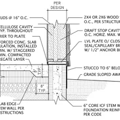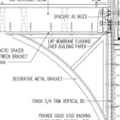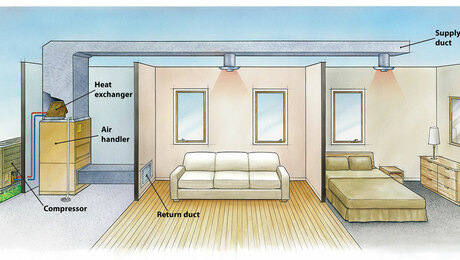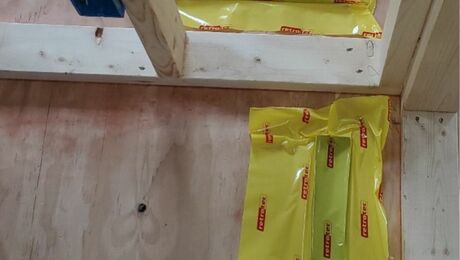Snow load on PV panels
Where I’m planning on building the code requires design for 75 PSF snow load.
The best rating for load that I’ve found in PV panels is 40 PSF. In the unlikely event that an actual maximum snow load were to occur some of the panels may fail but no other structural damage would occur. Could such a situation be approved?
GBA Detail Library
A collection of one thousand construction details organized by climate and house part









Replies
Jerry,
I assume this is a roof-mounted array. What is the pitch of the roof? What is the angle of the modules?
I live in a very snowy area. Most years, we have four feet of compacted snow on the ground in late March -- the end result of about 10 feet of snowfall over the winter. And my PV modules have held up well for over 30 years.
For one thing, PV modules are usually sloped and aimed to the south -- so that eventually the sun comes out and helps clear them.
While roof deck specifications for snow loads are still appropriate, a PV array isn't nearly as sticky as most roofing materials, and will never accumulate the load, as long as it's a high enough pitch.
In my neighborhood (central MA, ~110" of snow so far this year) PV panels mounted at a 6:12 pitch (26.5 degrees) or higher are typically clear of snow after one sunny day post-storm, even if they get 2+ feet of snow during that storm.
From snow-avalanche studies in mountainous areas, snow will normally slough away with minimal encouragement on slick surfaces >25 degrees, even though it needs to be nearly 50 degrees or higher to slide quickly when the surface has more grip (like rough stone, or small trees). The critical angle from a backcountry travel hazard is 38-40 degrees, where large snow slabs can build up, then fail suddenly on a weakened frost layer when a climber/skier becomes the straw breaking the camel's back. But on very slick surfaces it will glide & slide much sooner just from solar thermal cycling. This can happen at 25 degree pitches with weak hoarfrost layers even in the backcountry, but there it usually takes a human trigger to make it go. But on glass skylights or PV panels it's slick enough to glide away slowly even at low snow depths/masses, with just a bit of encouragement from the sun. The colder it is the longer it takes, but it seems pretty reliable, in my personal non-scientific observations. But at 4:12 pitches or lower it can stay around pretty much until the spring thaw sets in.